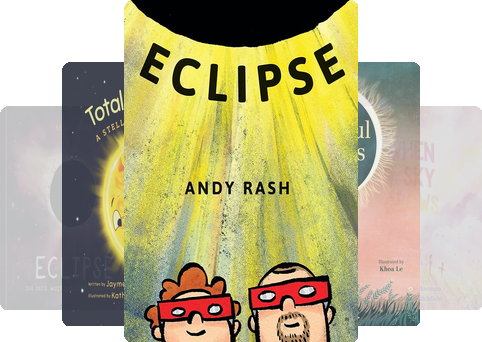Introduction to the 2025 Solar Eclipse
The solar eclipse in 2025 is a rare celestial event that offers a fantastic opportunity to teach students about astronomy and science. While the exact date and path of totality will be confirmed closer to the event, now is the perfect time to start preparing your classroom with the right resources. This article highlights a collection of fiction and non-fiction books that will help students understand and appreciate this phenomenon.
Why Use Picture Books to Teach About the Solar Eclipse?
Picture books are an excellent way to introduce complex scientific concepts to students. They combine engaging visuals with accessible language, making it easier for young learners to grasp the science behind a solar eclipse. Whether you’re in the path of totality or not, these books will spark curiosity and excitement in your classroom.
Top Books About the Solar Eclipse
1. “A Few Beautiful Minutes” by Kate Allen Fox
This poetic book captures the magic of a solar eclipse through the eyes of a child. It explores how the eclipse brings people together and describes the stages of the event in a way that is both educational and heartwarming.
2. “Total Solar Eclipse: A Stellar Friendship Story” by Jamie Sandberg
This story combines themes of friendship with the science of a solar eclipse. Students will connect with the characters while learning about the relationship between the Sun and the Moon during an eclipse.
3. “Eclipse” by Andy Rash
Based on the author’s real-life experience, this book tells the story of a father and son who travel to witness a solar eclipse. It’s a touching tale of bonding and discovery, with additional scientific information in the back matter.
4. “Eclipse: How the 1919 Solar Eclipse Proved Einstein’s Theory of General Relativity” by Darcy Patterson
This non-fiction book explains how a solar eclipse helped prove Einstein’s theory of relativity. It’s a great way to introduce older students to the history of science and the significance of eclipses in scientific discovery.
5. “When the Sky Glows” by Nell Cross Beckerman
This book covers various natural phenomena, including solar eclipses, and explains the science behind them. The stunning illustrations will captivate students and encourage them to explore the wonders of the natural world.
6. “What Is a Solar Eclipse?” by Dana Meachen Rau
This newly released book provides a comprehensive overview of solar eclipses, including how to observe them safely and the science behind them. It’s perfect for students who want to dive deeper into the topic.
7. “Eclipse: Our Sky’s Most Dazzling Phenomenon” by Kelsey Oseid
This book combines scientific facts with ancient myths and legends about eclipses. It’s a fascinating way to explore how different cultures have interpreted this celestial event throughout history.
8. “When the Sun Goes Dark” by Andrew Fraknoi
This book uses simple language and hands-on activities to explain solar eclipses to younger students. It’s an excellent resource for classroom demonstrations and interactive learning.
9. “Eclipses” by Nick Hunter
This book provides a detailed look at both solar and lunar eclipses, including their effects on wildlife and how they are studied today. It’s packed with photographs and activities to engage students.
How to Use These Books in Your Classroom
These books can be used in various ways to enhance your lessons about the solar eclipse:
- Read-Aloud Sessions: Share these books with your students during read-aloud time to spark discussions about the eclipse.
- Science Projects: Use the books as a starting point for hands-on activities, such as creating models of the eclipse.
- Cross-Curricular Learning: Integrate the books into history, art, or language arts lessons to explore the cultural and historical significance of eclipses.
